On the islands of Song Tu Tay, Nam Yet, Son Ca, Sinh Ton, Sinh Ton Dong, Da Tay A, Phan Vinh, Truong Sa Dong, and Truong Sa in the Truong Sa (Spratly) archipelago, the red-tiled roofs of Vietnamese pagodas can be seen nestled among green foliage.
Despite limited land, each pagoda in the Truong Sa archipelago is fully constructed with a three-entrance gate, courtyard, and bell tower. Their layout often follows the traditional "Dinh" (丁) architectural style, where the main sanctuary is built perpendicular to the front ceremonial hall. The sloping tiled roofs curve upward at the corners, distinguishing them from pagodas in other Asian countries.
In recent years, the Vietnamese Party, State, and the Vietnam Buddhist Sangha have paid great attention to the spiritual and cultural life of military personnel and islanders. The construction and renovation of these island pagodas fulfill the wishes of both the armed forces and civilians.
Thanks to contributions from Buddhists, citizens, and organizations nationwide, there are now nine large, beautiful pagodas across the archipelago. All are oriented toward the capital, Hanoi.
Stone statues in the pagodas are built to withstand time, but wooden and tiled structures often struggle against the harsh marine climate. Despite this, the pagodas receive regular maintenance to prevent termite damage and deterioration.
These pagodas serve not only as places of worship but also as cultural and spiritual beacons, reflecting the deep-rooted Vietnamese identity and the unwavering patriotic spirit to protect the sacred sovereignty of Vietnam's maritime territory.
The architecture and surrounding green spaces at the Truong Sa pagodas reflect traditional Vietnamese aesthetics. All signage, calligraphy panels, and parallel couplets are written in Vietnamese.
At Da Tay A Island, the pagoda is built in traditional Vietnamese style, located near the main gate beside the pier. The pagoda follows a design with an odd number of rooms, a curved roof with stylized ridges, and uses high-quality, salt-resistant wood.
Visiting delegations often spend time at the Da Tay A pagoda to light incense and offer prayers. In addition to Buddhist altars, the pagodas also house memorial shrines dedicated to heroic martyrs who sacrificed their lives to protect Vietnam’s maritime sovereignty.
All island pagodas are equipped with symbolic architectural features: three-entrance gates, tiled courtyards, bell towers, and sanctuaries aligned in traditional layouts.
The incense burners and altar items in these pagodas bear the Vietnamese national emblem. Visitors frequently hold ceremonies and ring the bell upon arrival.
At Sinh Ton Dong Island, the three-entrance gate proudly displays bold declarations of sovereignty in poetic Vietnamese couplets, such as:
“Virtue as vast as heaven and earth, shining upon the Southern skies, a realm of its own; Might spanning the cosmos, brightening the Vietnamese land across all people.”
“Together we pledge to guard the ancestral seas and islands; Holding hands in unity, we vow our pure-hearted dedication to the homeland.”
Venerable Thich Chuc Thanh, abbot of Sinh Ton Dong Pagoda, has been serving spiritual duties on the island for several years. Despite being in his early 30s, he considers himself both a monk and a soldier on the frontline of his homeland. He remains committed to his mission and wishes to continue serving on the island.
He shares: "The pagoda is not only a place of worship but also a beacon of light in the open sea, a spiritual anchor for soldiers and fishermen on this remote frontier. We safeguard not just faith, but also love for the sea, for our homeland. Under this temple roof, though far from the mainland, hearts remain warm and peaceful. We are dedicated to empowering the officers, soldiers, and residents of the islands."
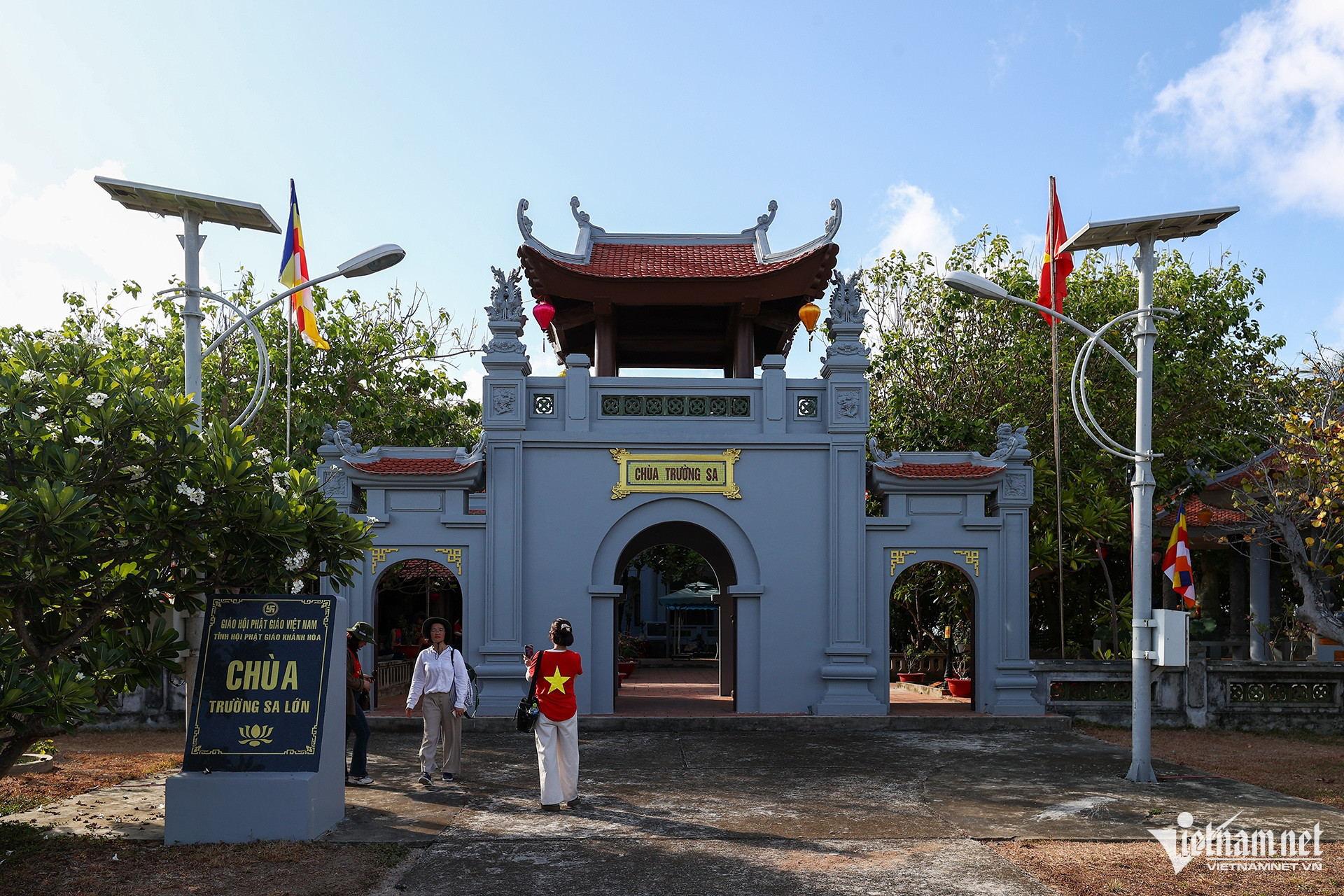
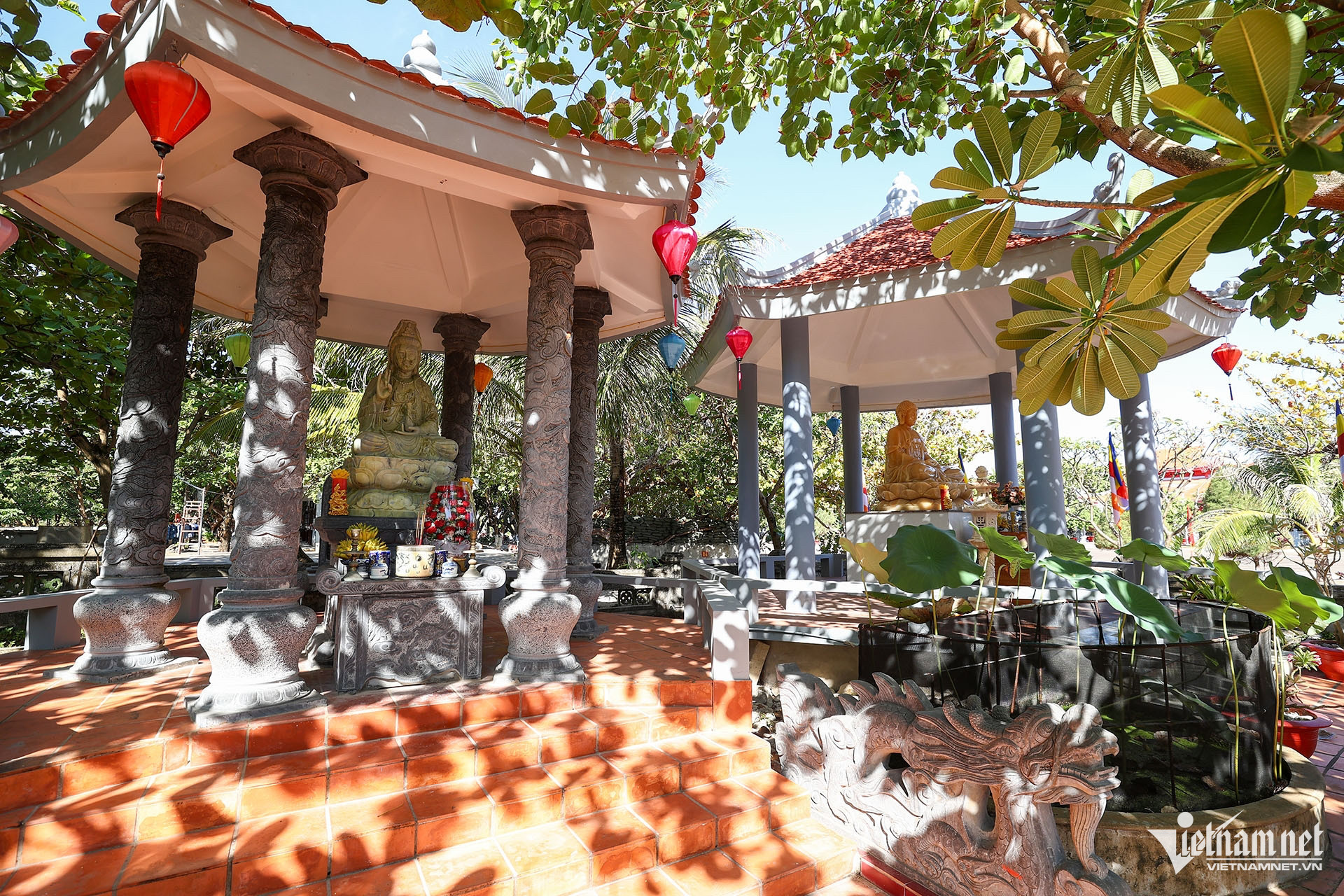
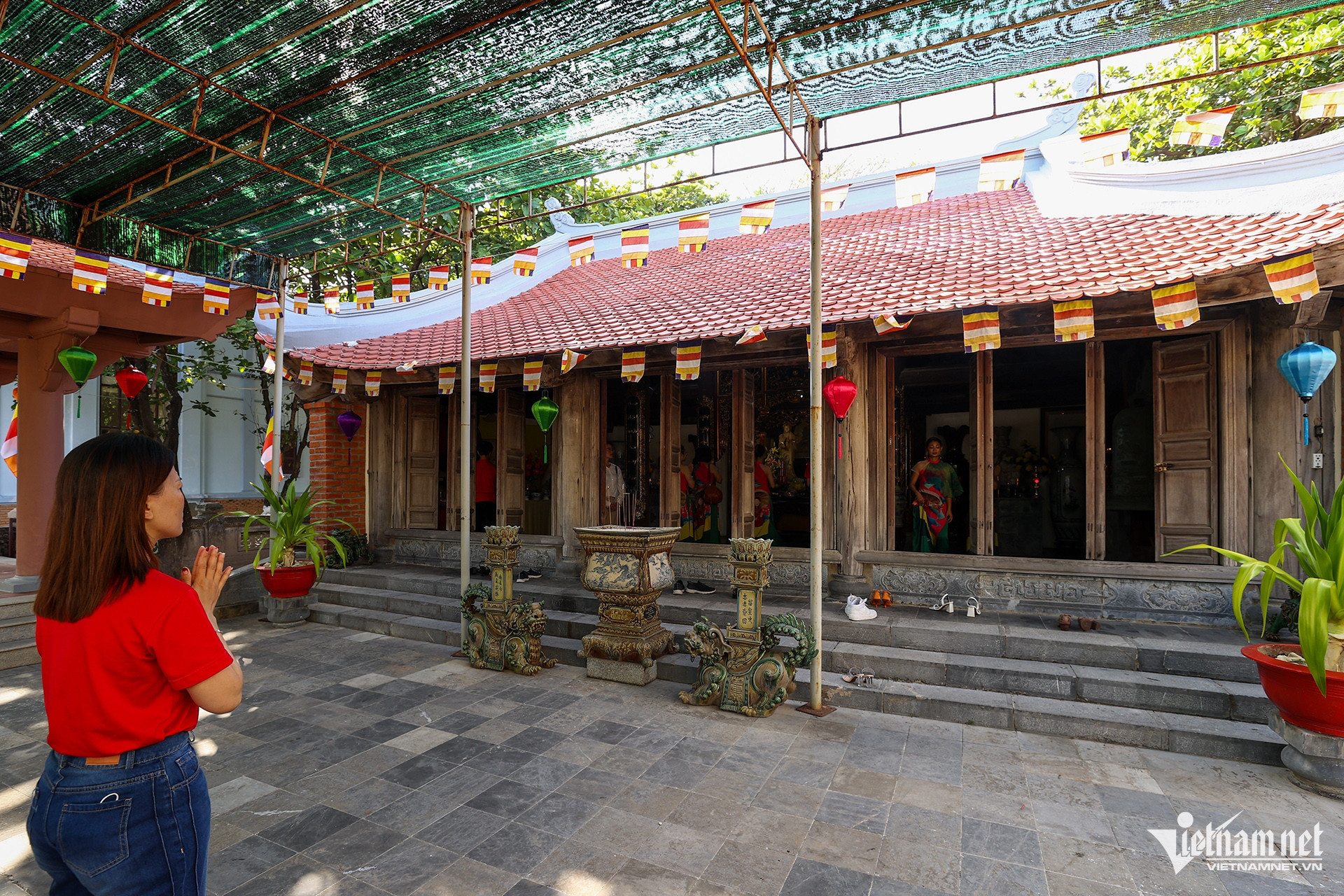
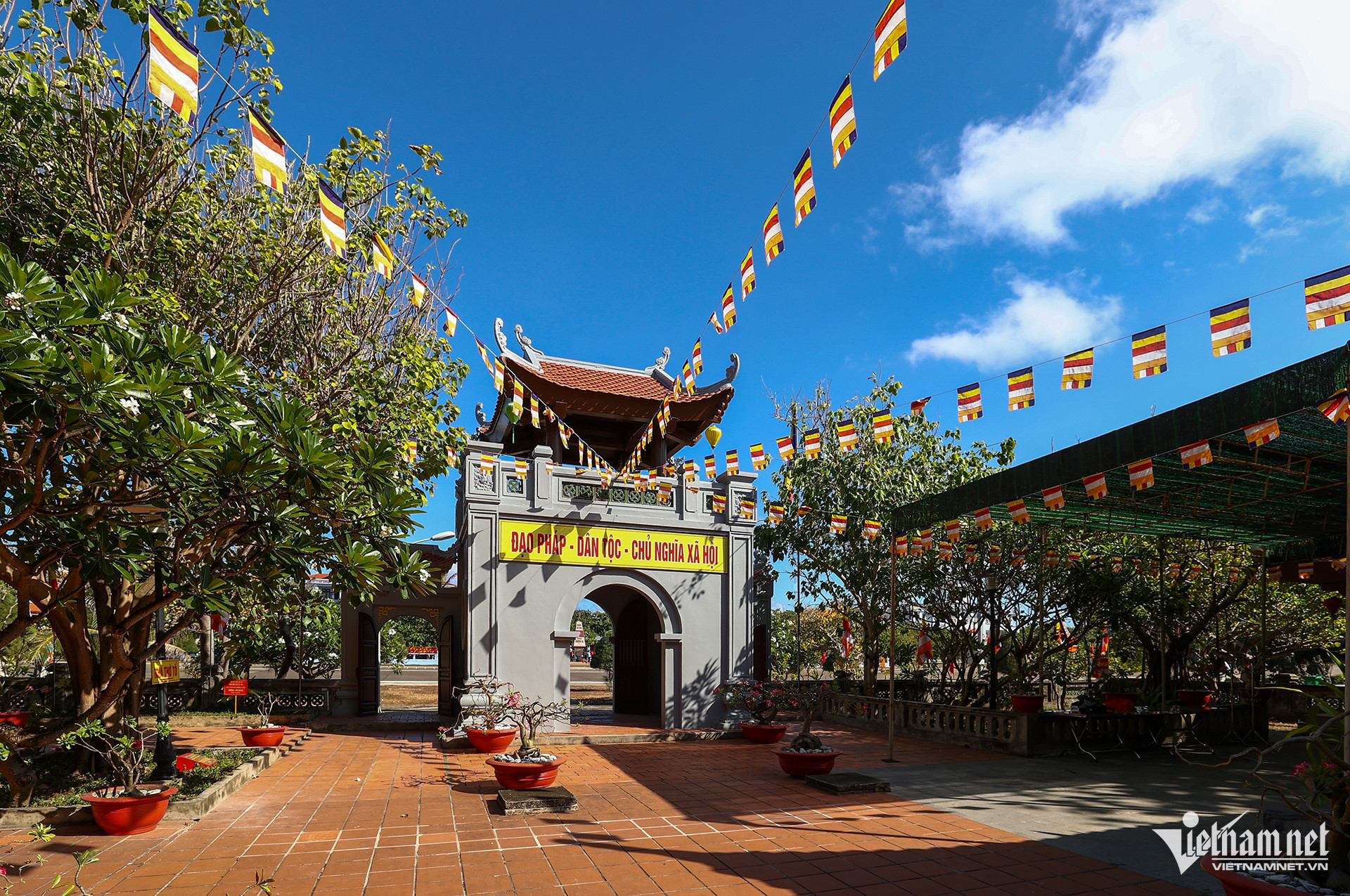
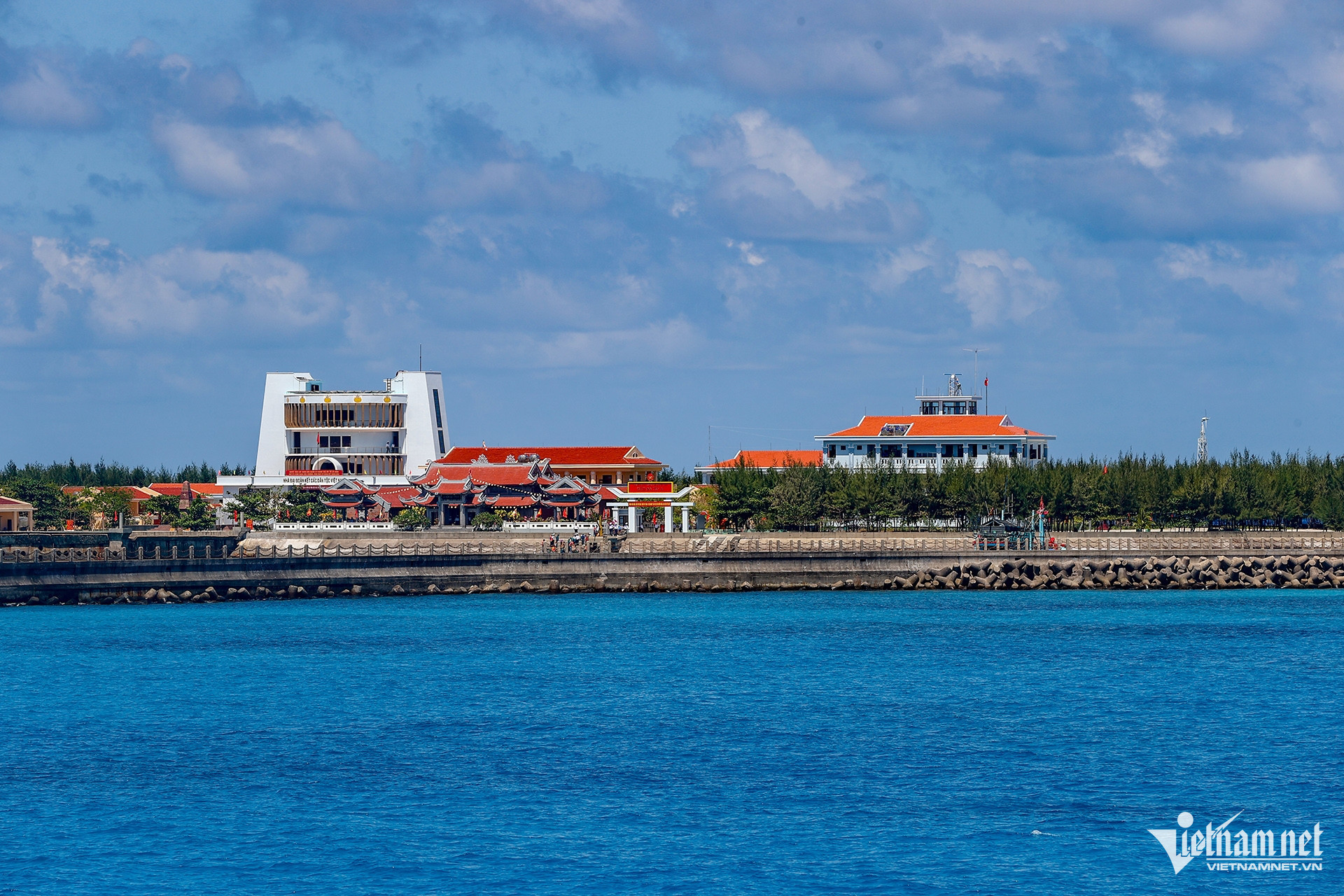
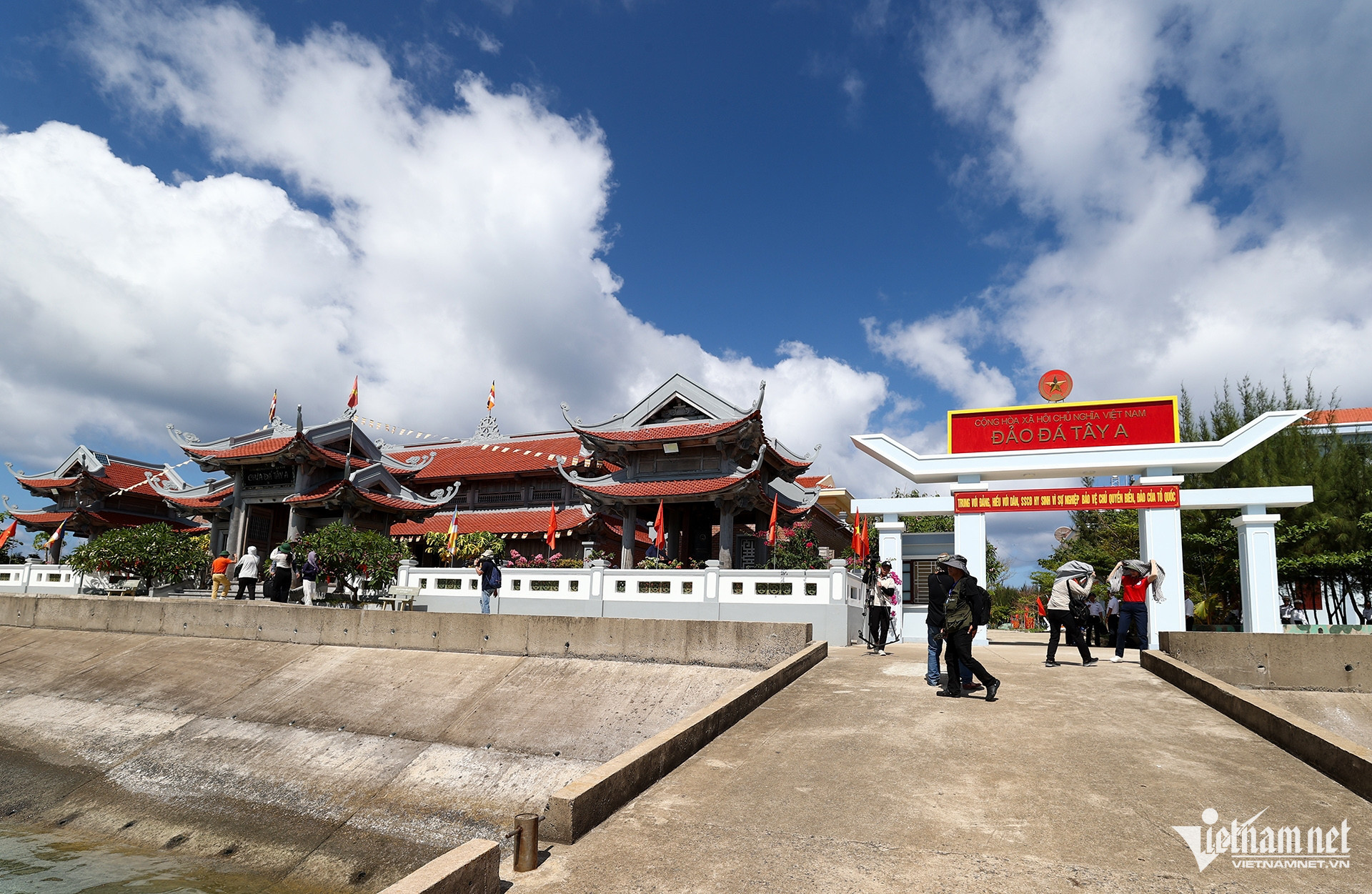
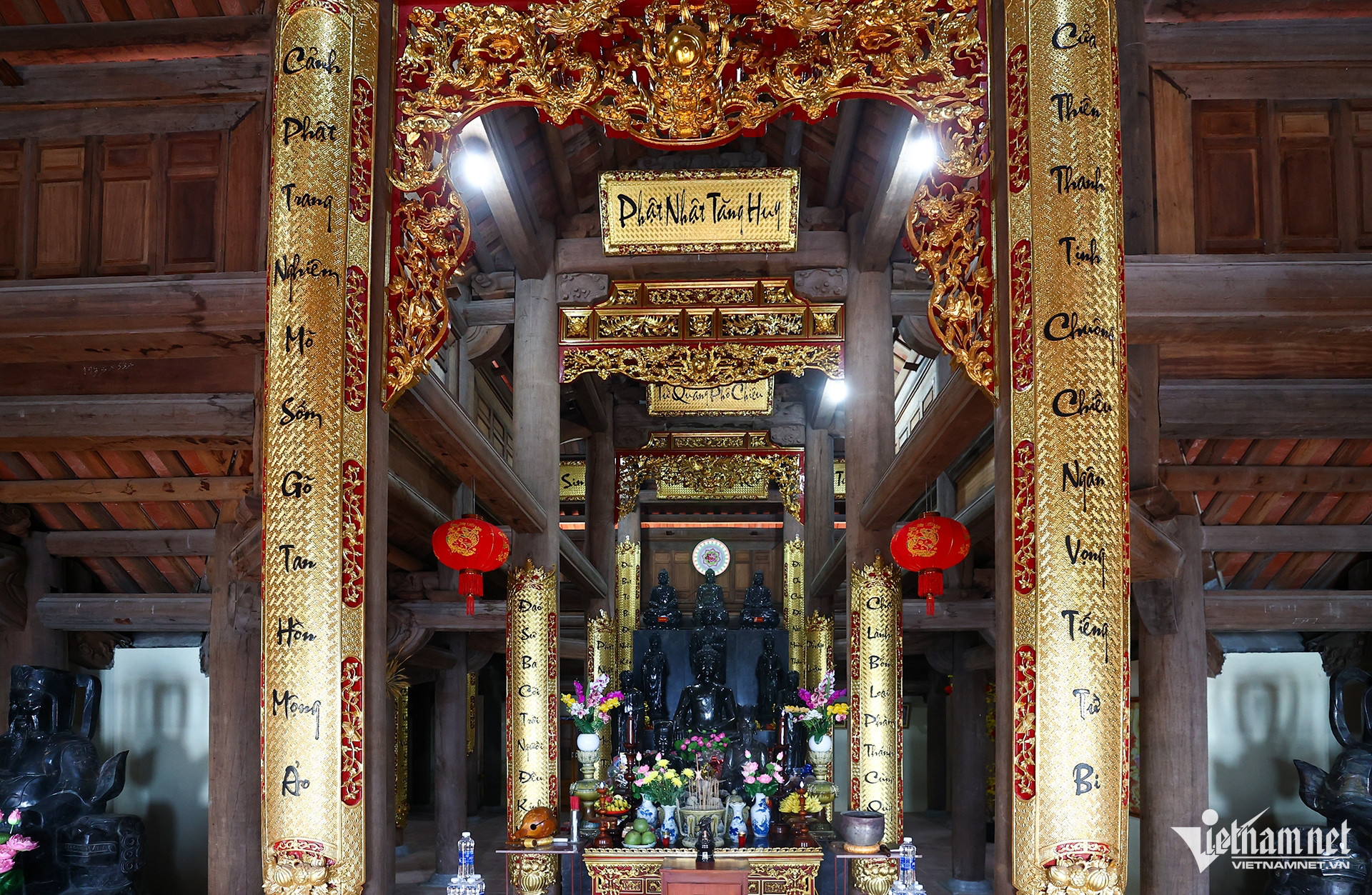
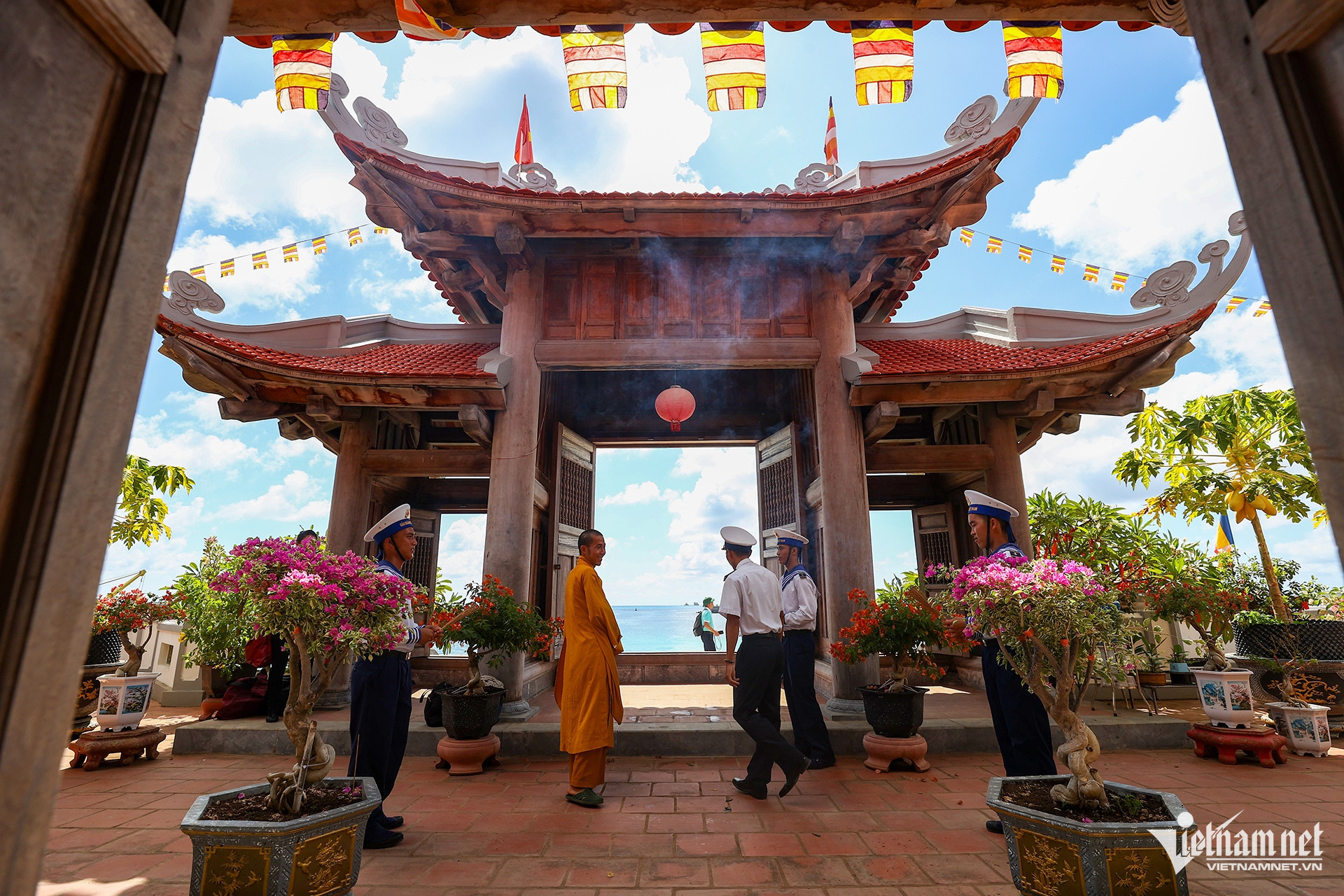
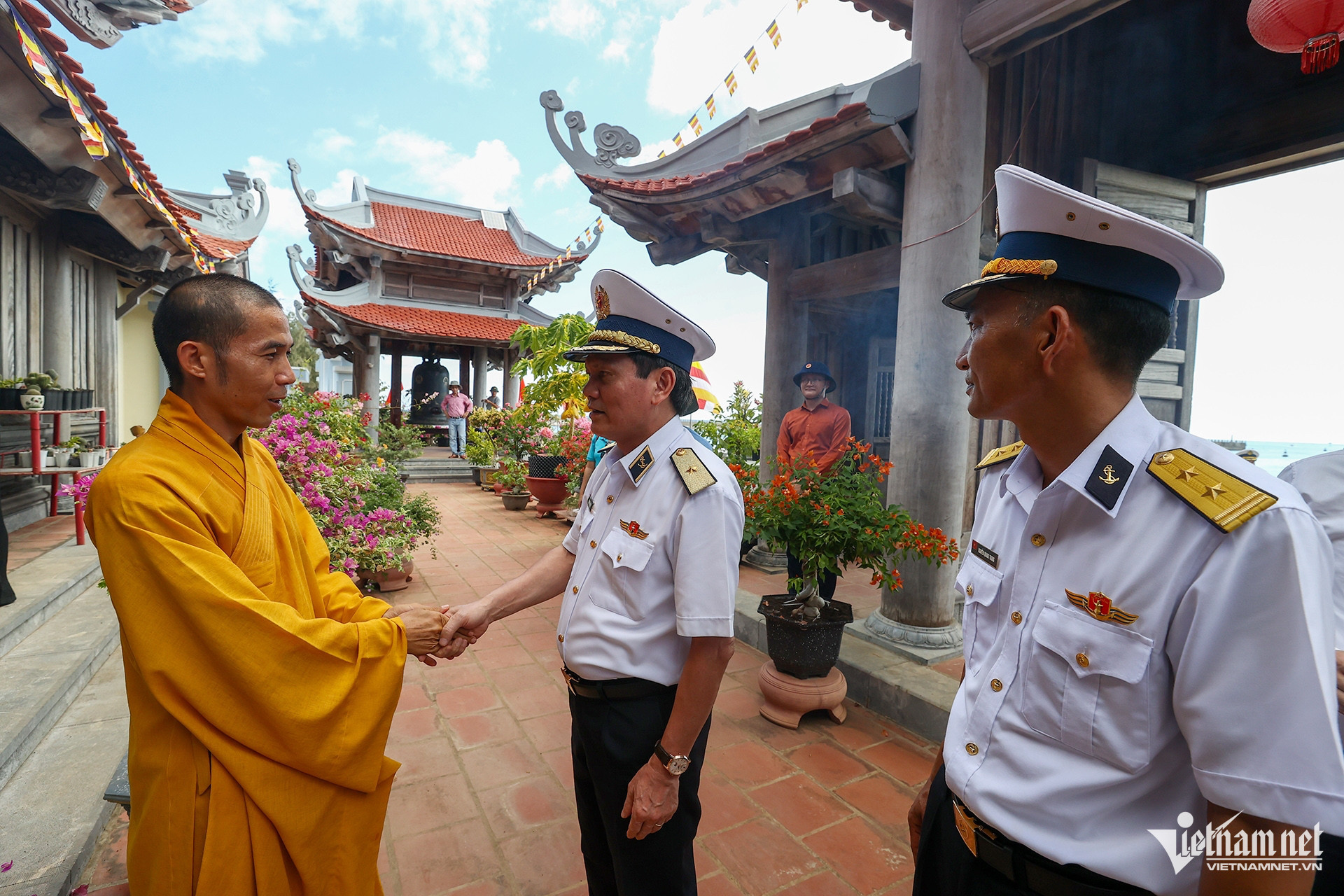
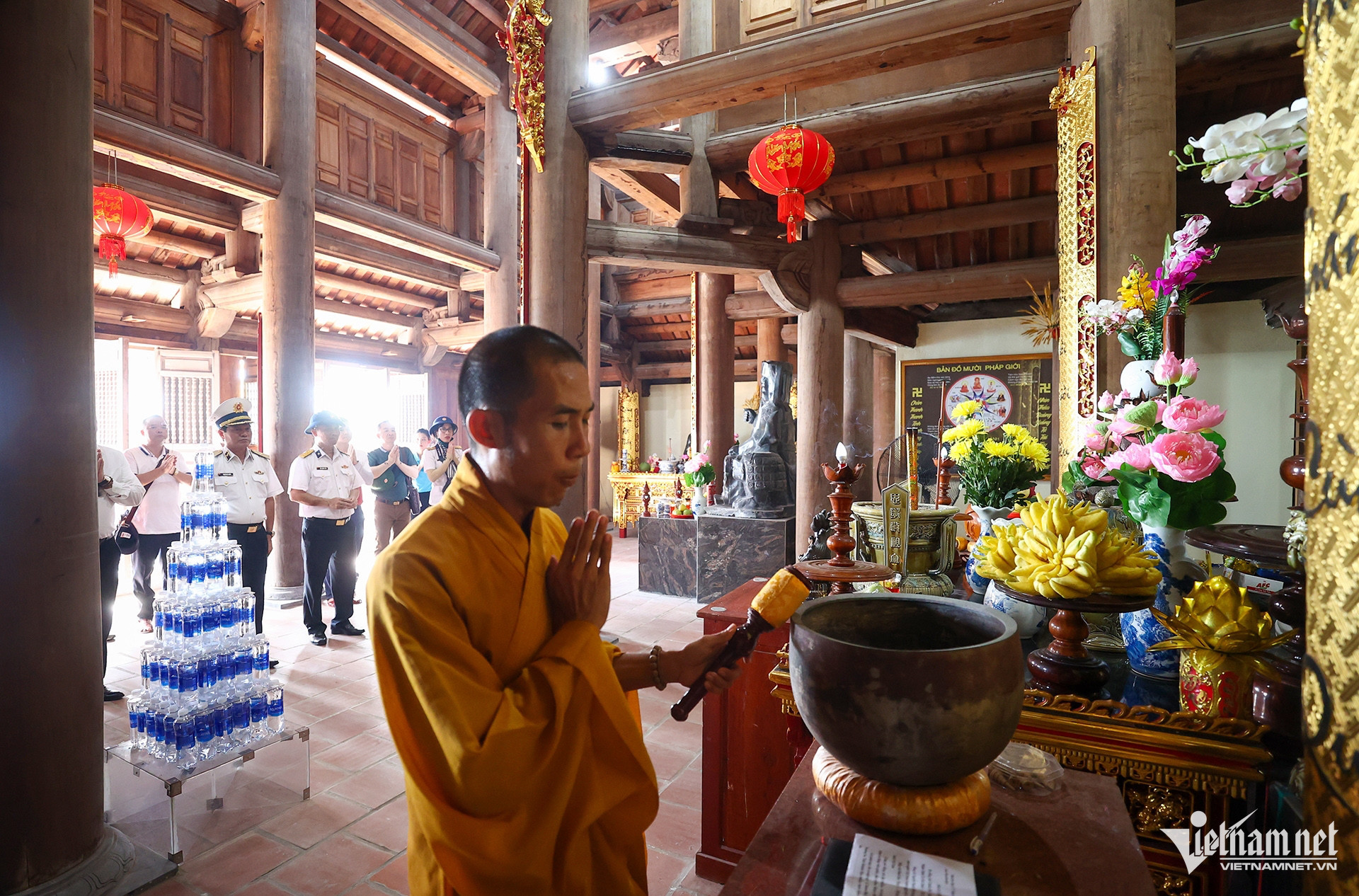
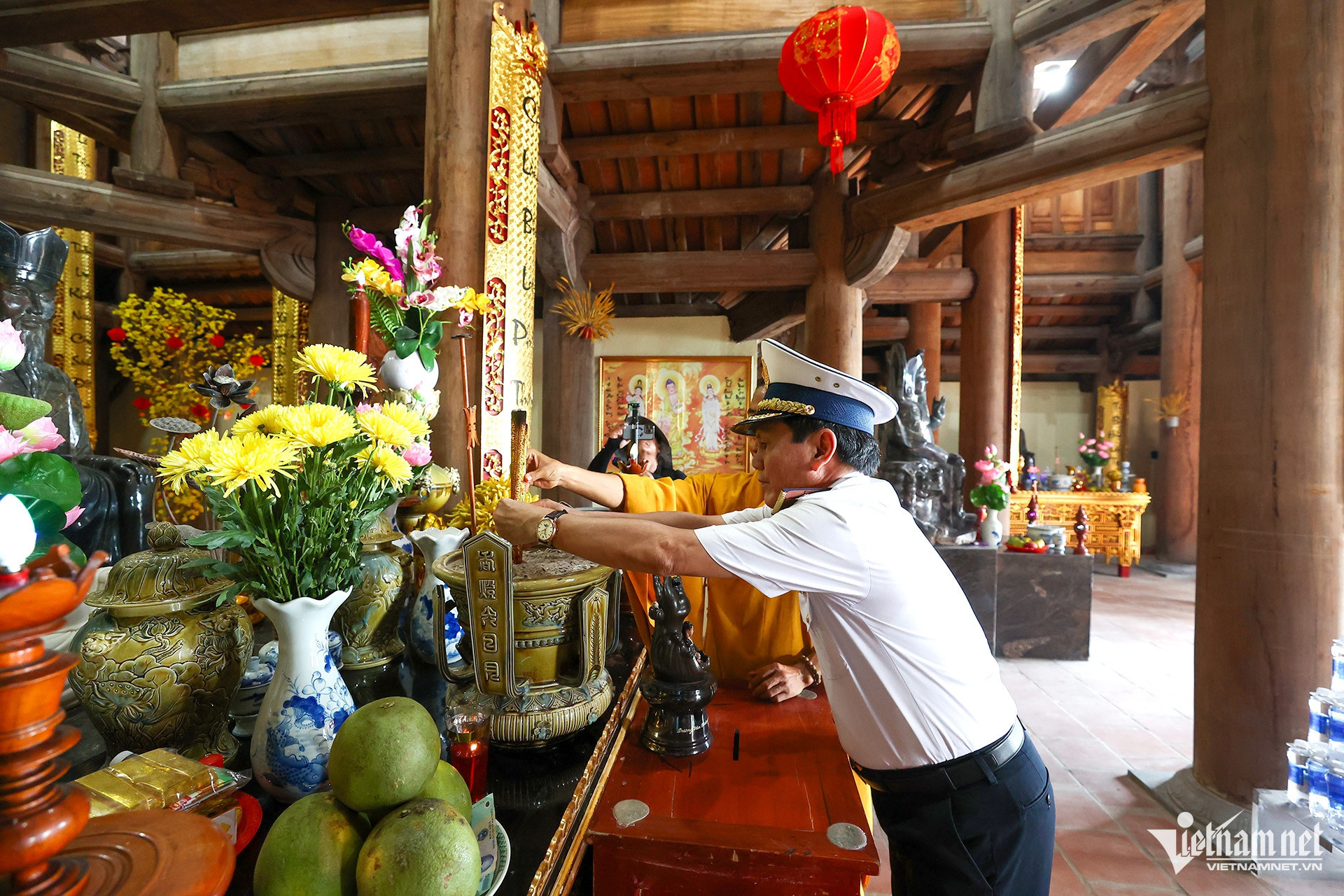
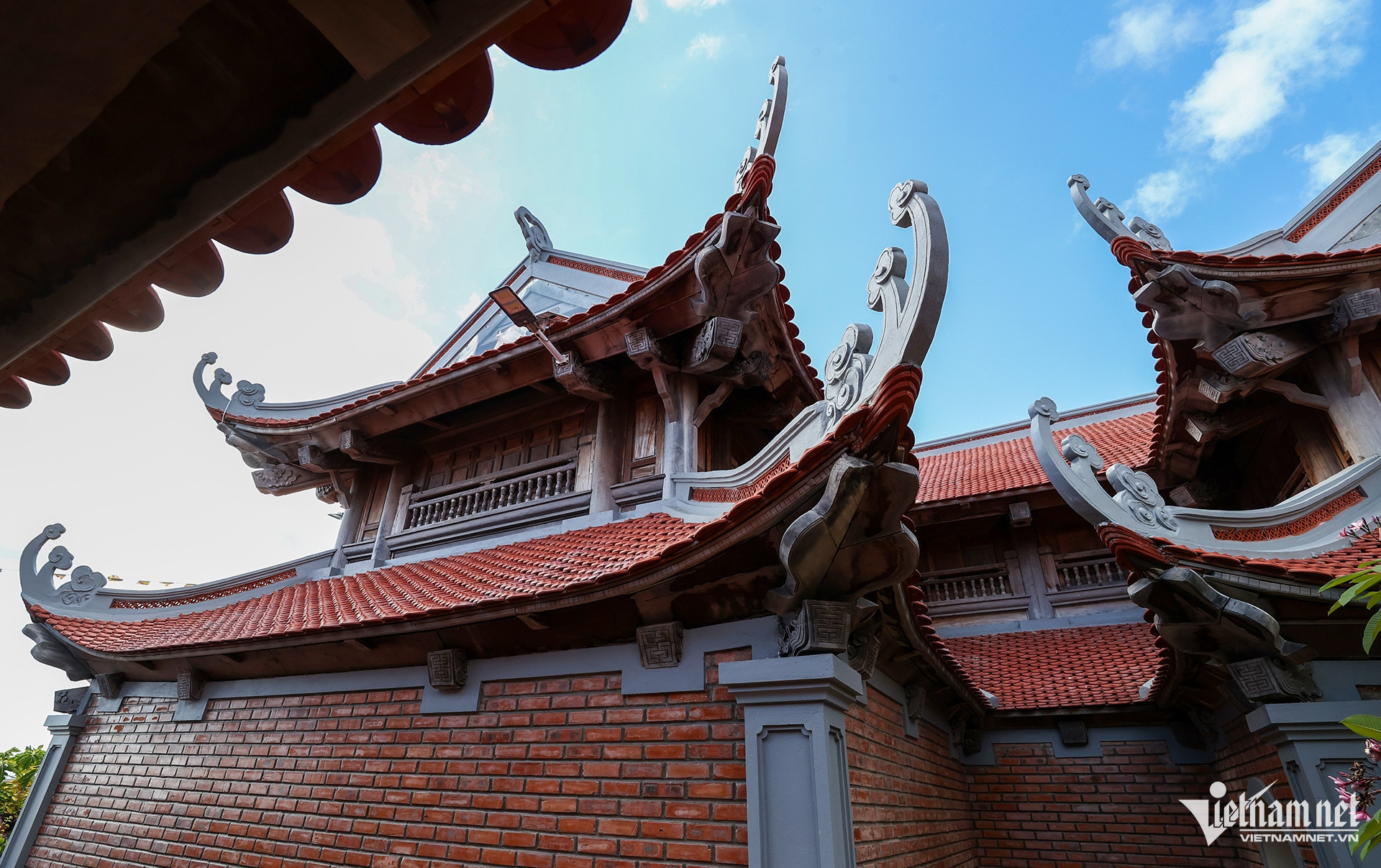
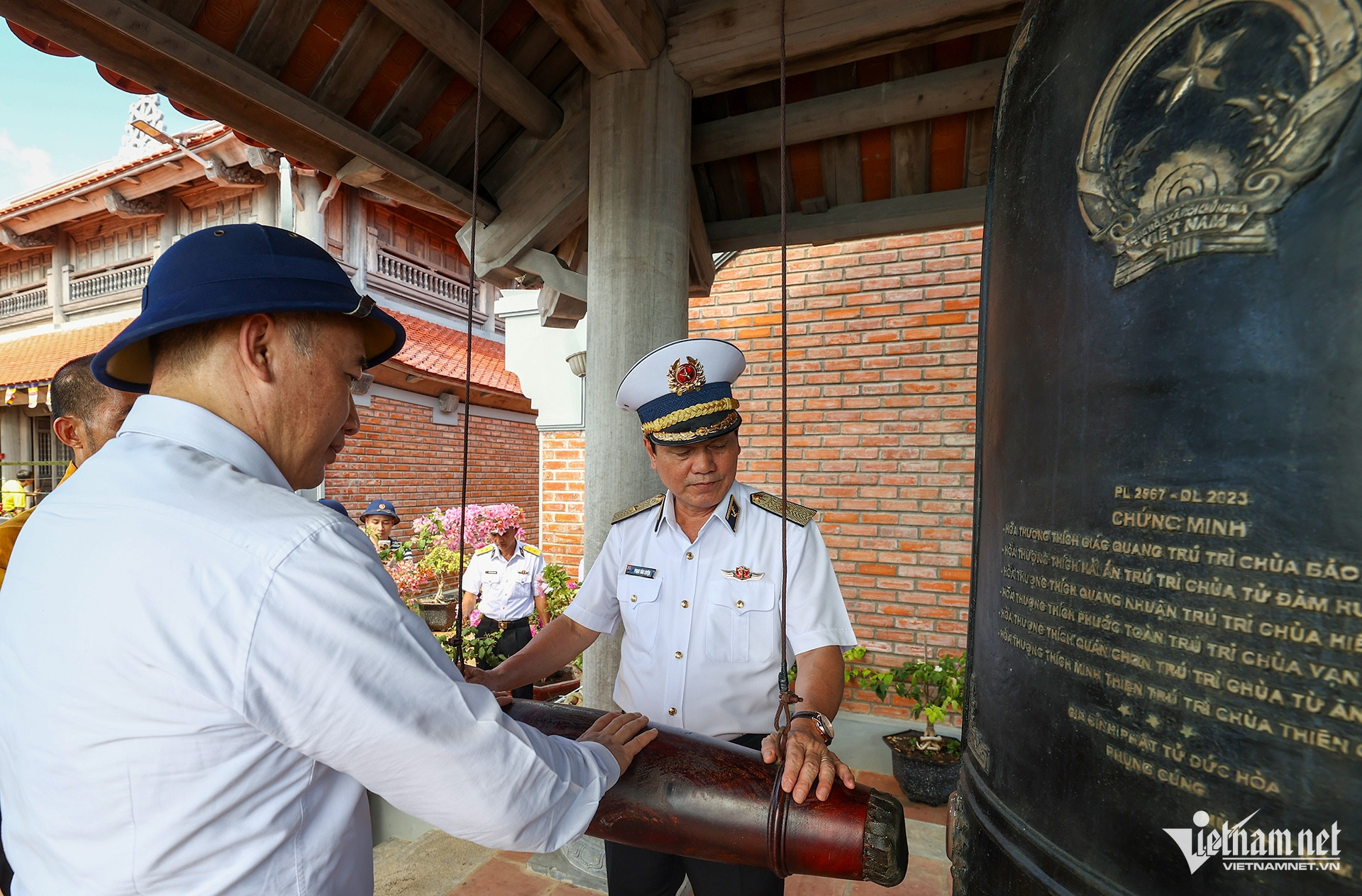

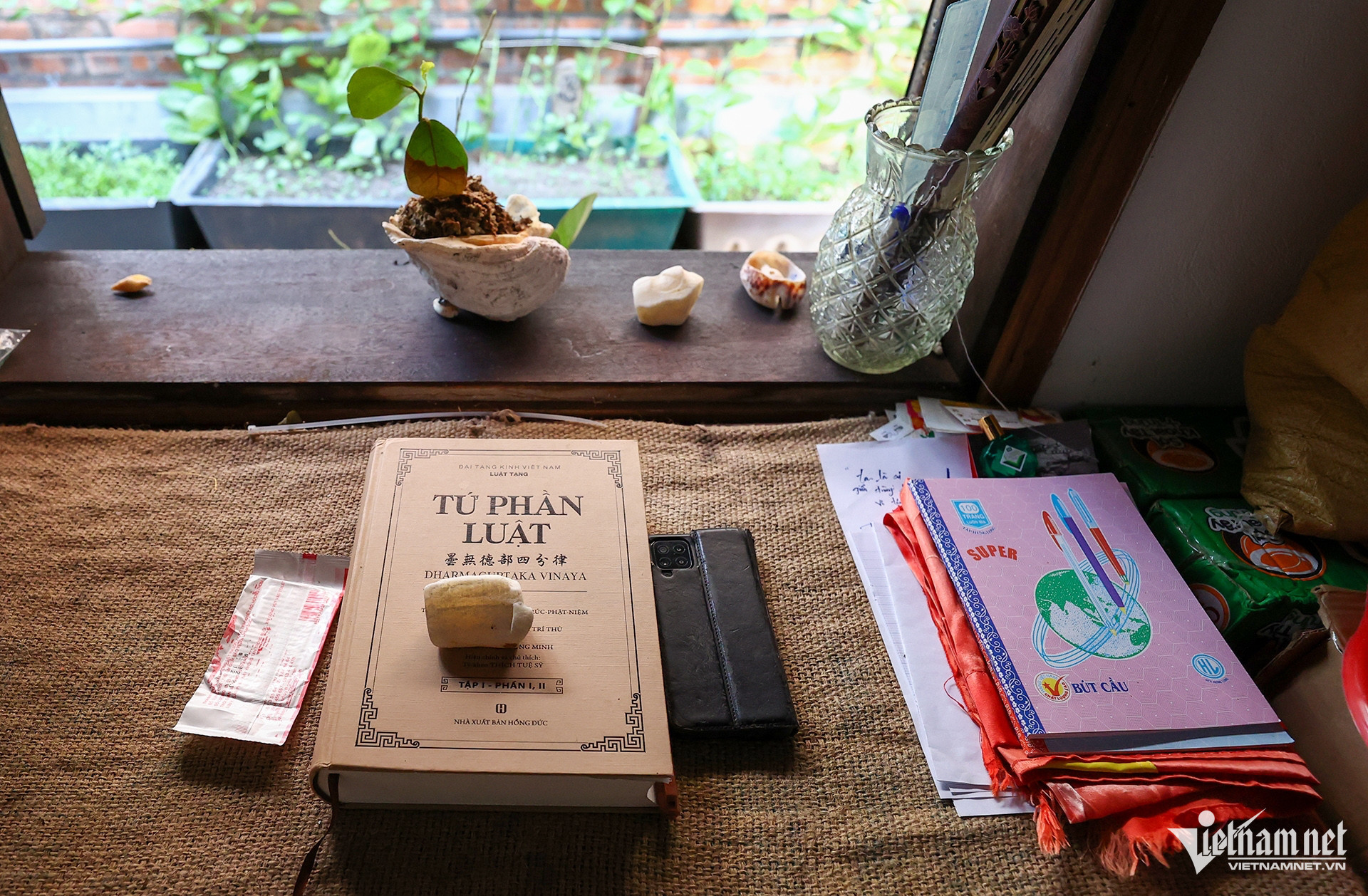
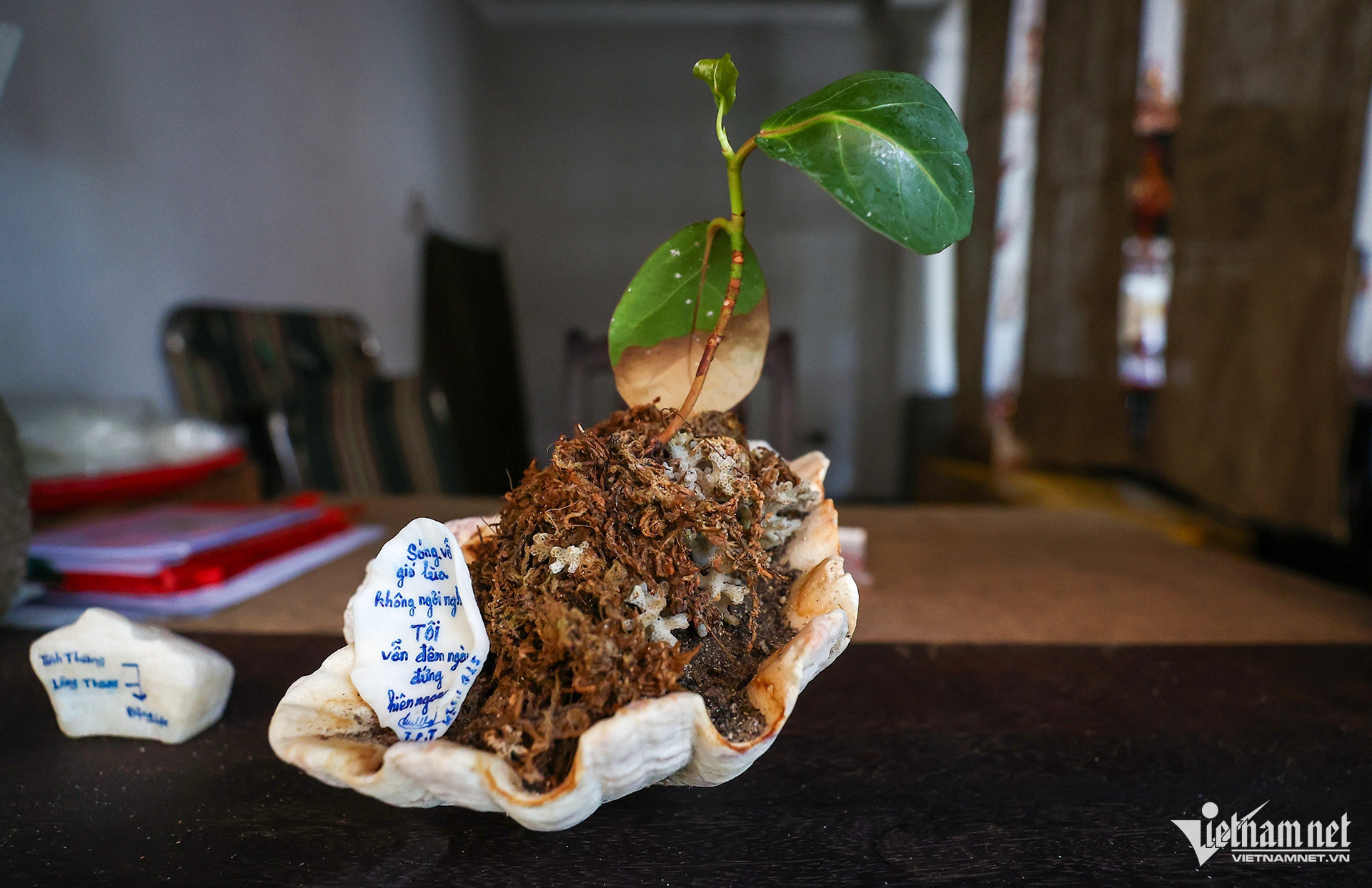
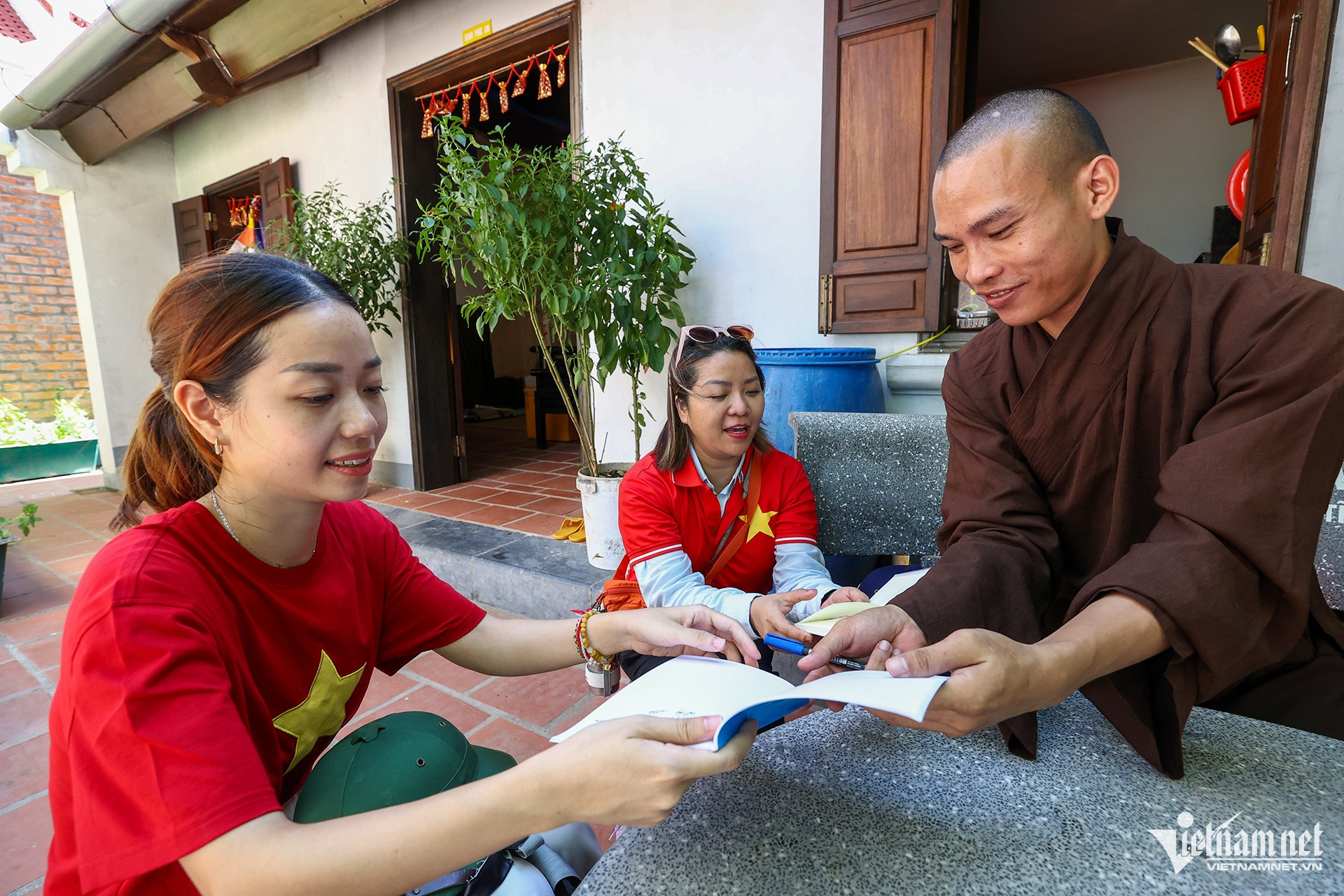
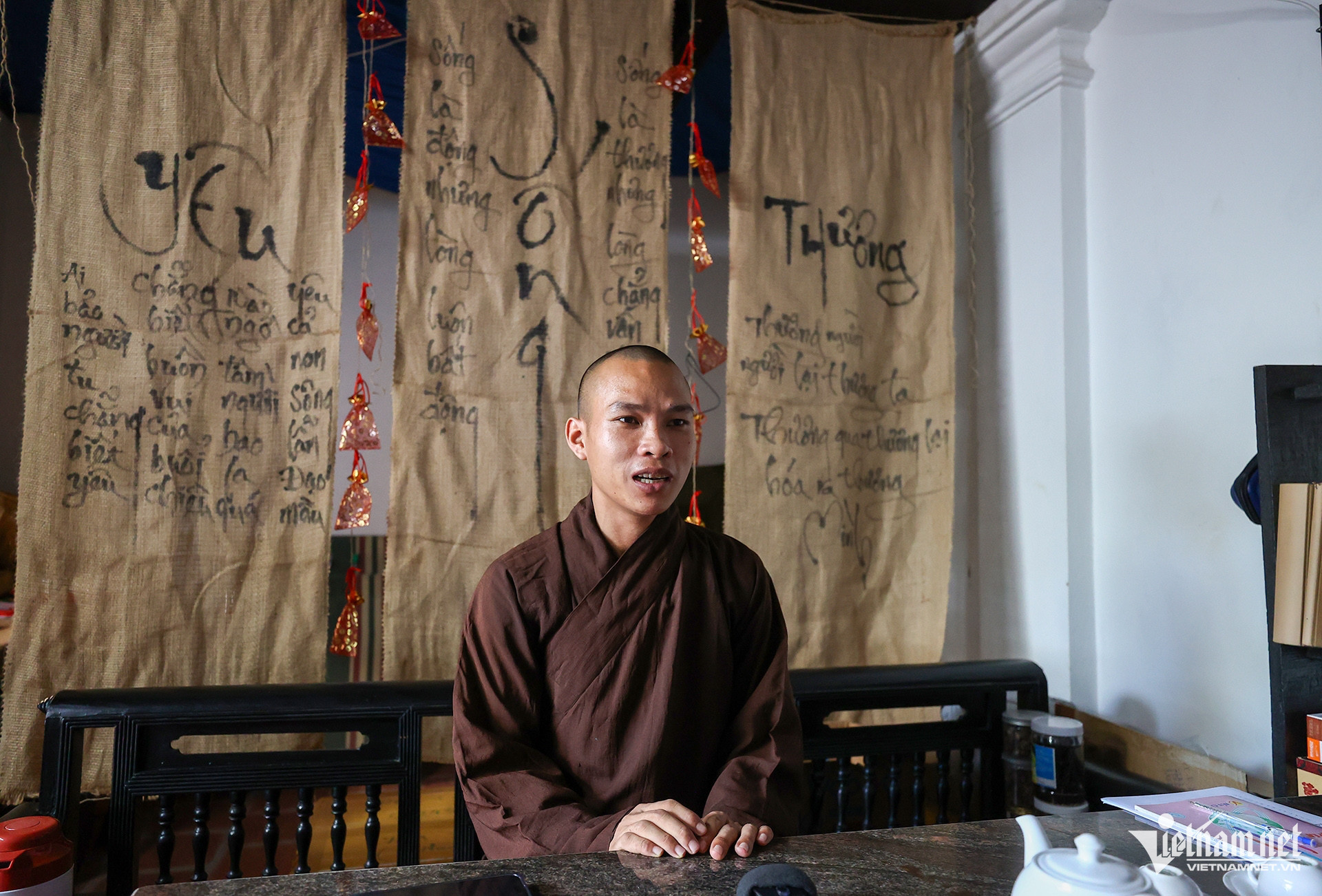
Pham Hai